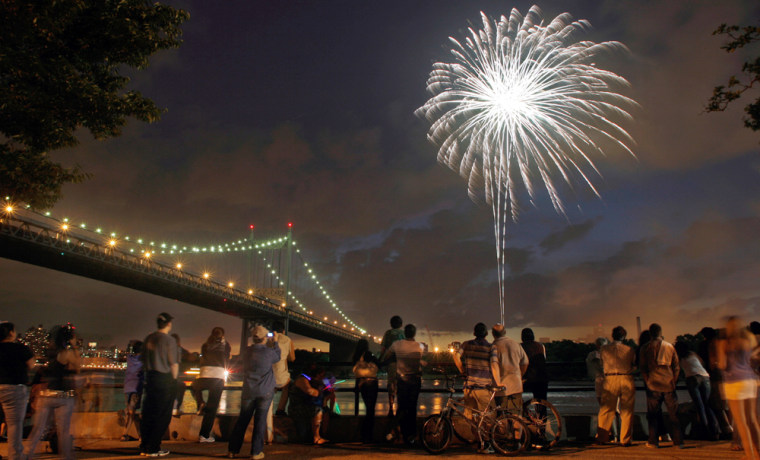The rocket's red glare on future July Fourth celebrations may be more eco-friendly as researchers revise the chemistry behind the pyrotechnic displays.
Roman candles and roadside flares typically use potassium perchlorate to speed up the fuel-burning process that drives them. As they burn, they should consume most of the perchlorate, but sometimes the reaction snuffs out before all the fuel is consumed, leaving behind some of the chemical. Excess perchlorate is also sometimes added to .
These leftovers can be a problem because they inhibit the working of the thyroid gland, which produces a key hormone in the human body, according to an article in the June 30 issue of Chemical & Engineering News.
A 2007 U.S. Environmental Protection Agency study mentioned in the article measured perchlorate levels in a small lake in Oklahoma where an annual fireworks show is held. Within 14 hours of the display, perchlorate levels in the water were 1,000 times higher than they were naturally.
One way chemists are trying to revamp these is by using compounds with a high nitrogen content to supply the energy that drives the burning reaction. Getting all that energy from breaking nitrogen bonds means that less perchlorate is needed to make those burning shapes in the sky.
Less perchlorate also means less smoke, which in turn means that fewer coloring agents, which are usually heavy metals like strontium, barium and copper, are needed to dazzle patriotic revelers.
Another compound in the new fireworks, nitrocellulose, doesn't need perchlorate at all to light up the night.
"Nitrocellulose is probably one of the best low-smoke ingredients," Darren Naud of DMD Systems told Chemical & Engineering News. "It burns with little smoke, and there's no fallout or residual combustion by-products that are nasty. There's just [carbon dioxide], water and nitrogen."
Some of these pyrotechnics are already being used in fireworks displays held outdoors and indoors during concerts.
